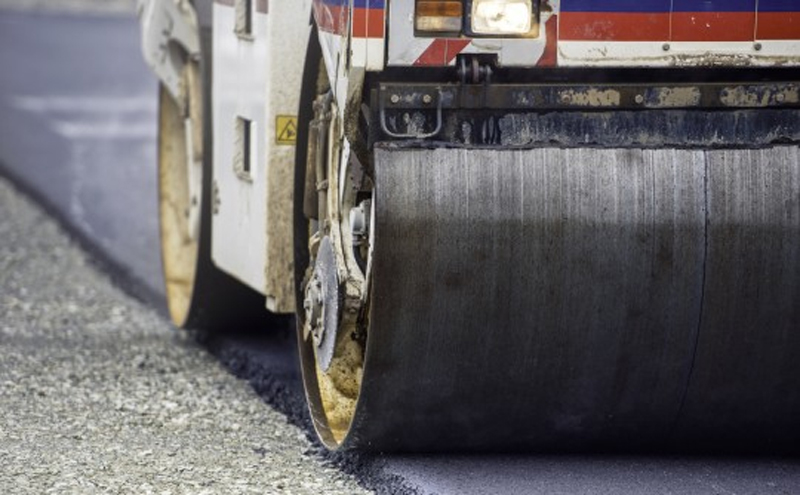
Last week, the S.C. Department of Transportation announced that it had completed rebuilding a nine-mile stretch of Interstate 85 in Spartanburg County.
Yet as of Oct. 31, DOT had completed just 17% of the total estimated cost of other identified “pavements” projects in the county with gas-tax-hike revenues, newly released agency records show. Spartanburg County was among at least 25 counties statewide that had completion rates of less than 25% in that category, The Nerve’s latest review found.
And, in 16 counties, DOT had made no vendor payments with gas-tax-hike money through Oct. 31 for major road-rebuilding projects, according to agency records.
Through the first 28 months of the gas-tax-hike law, which raised the state gas tax 12 cents per gallon over six years and increased other vehicle taxes and fees, more than $917 million in revenues had been collected, DOT and state Comptroller General’s Office records show.
The collected amount was nearly $155 million more than the projected cost of all paving projects statewide identified by DOT, and represented 80.5% of the more than $1.1 billion in total identified road and bridge projects.
As of Oct. 31, a special state fund created with the gas-tax-hike law had a cash balance of about $443.4 million, according to DOT and comptroller general records. That amount represented more than 48% of total collected revenues over the period.
In passing the gas-tax-hike law, which took effect July 1, 2017, lawmakers promised that the money would be used to fix crumbling roads and bridges in their constituents’ communities. DOT has said 80% of the state’s approximately 42,000 miles of roads needs repaving or rebuilding, and identified 465 out of 750 “structurally deficient” bridges to be replaced.
DOT plans to complete about 2,300 miles of road repairs by the end of 2021, though that number represents less than 7% of the approximately 33,600 miles of state roads that the agency has designated to be resurfaced or rebuilt, as The Nerve reported in August. DOT eventually wants to bring about 16,800 miles of state roads up to a “good” rating under its 10-year plan.
Despite lawmakers’ promises to use gas-tax-hike money for road and bridge repairs, as of Oct. 31, DOT had designated $247.2 million, or about 22% of the total approximately $1.14 billion in project “commitments,” for interstate widenings, agency records show. The agency began to more clearly acknowledge those projects after The Nerve in January revealed the plans.
A special state Senate panel, called the “Special Interstate Subcommittee,” held its first meeting in October to discuss accelerating interstate expansion. The subcommittee was created by powerful state Sen. Hugh Leatherman, R-Florence, who sits on the State Transportation Infrastructure Bank board, which over the years funneled several billion dollars to large construction projects in select counties.
The Nerve’s latest review of DOT records found that Leatherman’s home county of Florence was among at least 15 counties that recorded more than $10 million in total vendor payments with gas-tax-hike revenues through Oct. 31.
Of the approximately $401.2 million in total vendor payments statewide over the 28-month period – as broken down by county – $141 million, or more than a third of the total, was spent mainly on “preservation” and “safety improvement” projects, agency records show.
“Preservation” projects include such things as “chip sealing” and “crack sealing”; widening shoulders and adding guard rails are examples of “safety improvement” projects, according to DOT’s website.
Of the total vendor payments through Oct. 31, about $198.5 million went for road “rehabilitation” projects, defined by DOT as the “removal and replacement of deteriorated pavement surface or by increasing pavement thickness to strengthen existing pavement sections to accommodate existing or projected traffic loading conditions.”
But less than 15% of the total payments over the 28-month period – $59.2 million – went for major road-“reconstruction” projects, defined by DOT as typically requiring the “complete removal and replacement of the existing pavement structure” to increase the “structural capacity of the pavement to a level that is required for long term performance.”
Only one county – Edgefield – reached the 50% mark of total vendor payments designated for reconstruction projects as of Oct. 31, The Nerve’s review found. No payments for reconstruction projects were listed for the following 16 counties, DOT records show: Aiken, Allendale, Bamberg, Barnwell, Beaufort, Berkeley, Calhoun, Charleston, Clarendon, Colleton, Hampton, Kershaw, Lee, McCormick, Orangeburg and Williamsburg.
In another 10 counties, less than 10% of total vendor payments went for identified reconstruction projects over the 28-month period: Lexington (9.24%), Florence (7.91%), Georgetown (7.85%), Marlboro (7.5%), Darlington, (3.99%), Jasper (3.92%), Newberry (2.56%), Chesterfield (1.37%), Greenville (.5%), and Horry (.21%).
Editor’s Note: The South Carolina Policy Council, the parent organization of The Nerve, has launched “Project Road Repair” to encourage citizens to contact their lawmakers about getting their bad roads fixed. To learn more about the project, go here.
Brundrett is the news editor of The Nerve (www.thenerve.org). Contact him at 803-254-4411 or

















